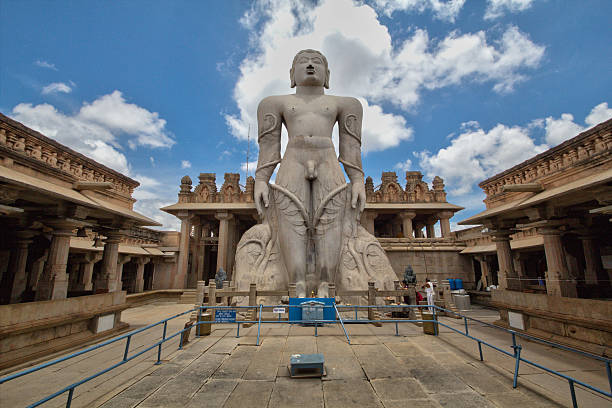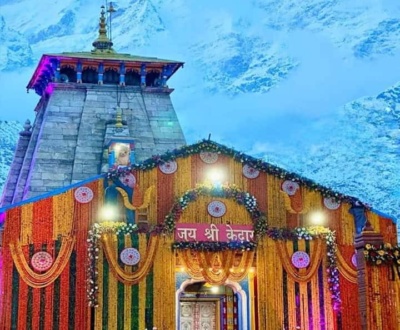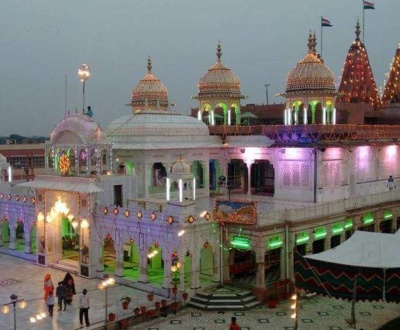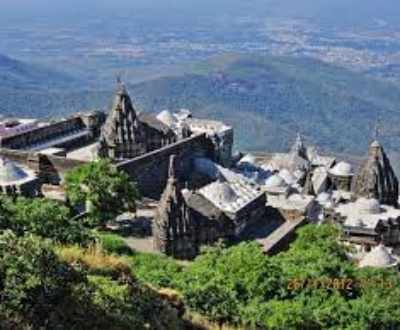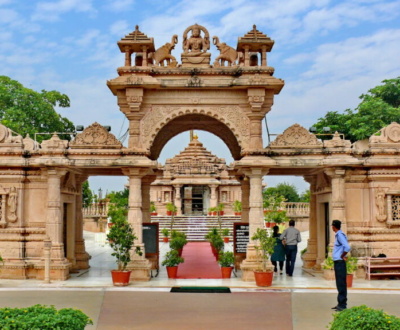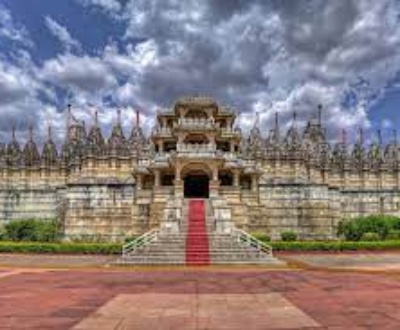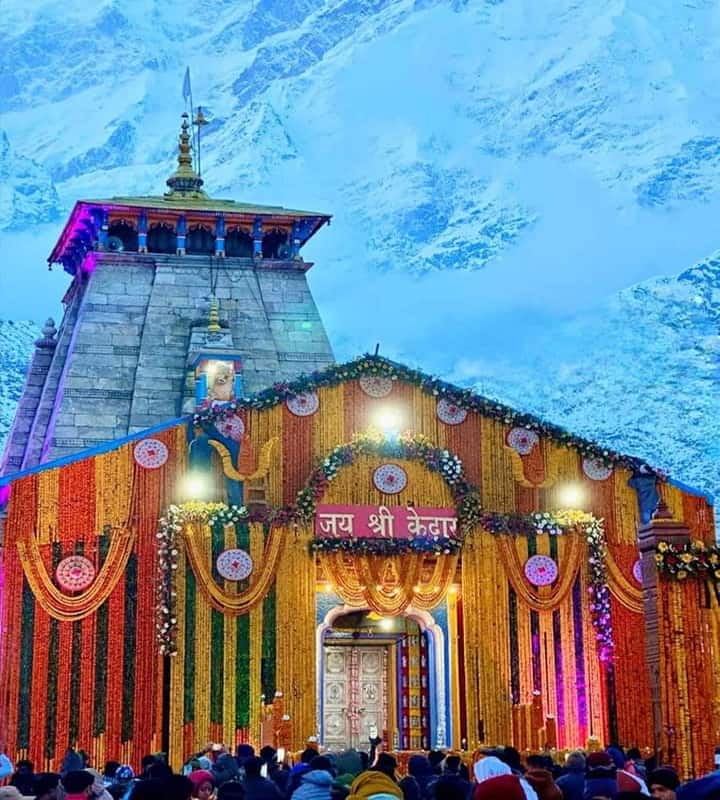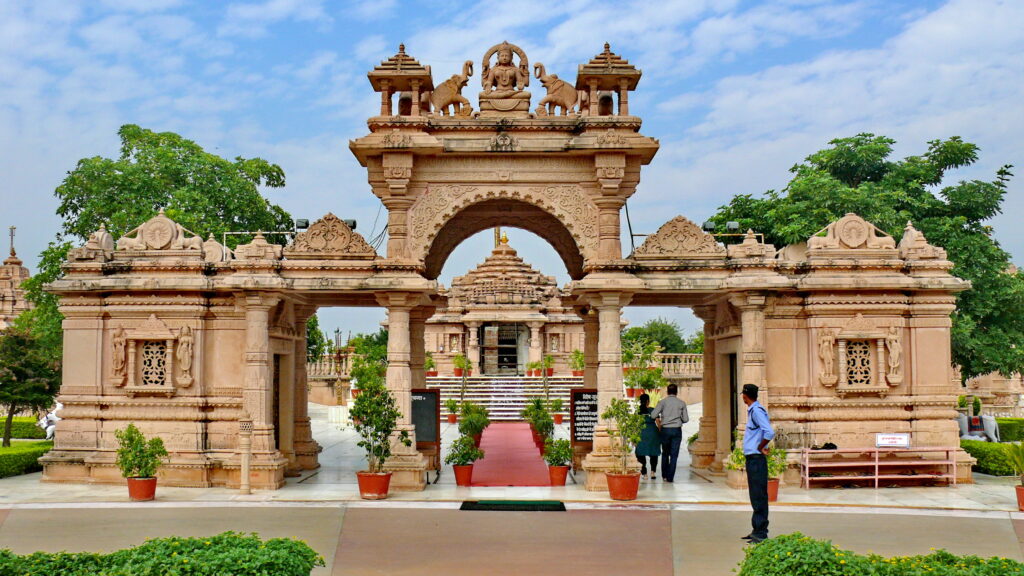Gommateshwara Bahubali Temple, Karnataka: A Spiritual Oasis of Serenity and Grandeur
- September 14, 2023
- Travel
Gommateshwara Bahubali, also known simply as Bahubali, is a revered figure in Jainism, one of the major religions of India. He is renowned for his asceticism, spiritual attainment, and his colossal statue. Nestled amidst the lush greenery of Karnataka’s picturesque landscape, the Gommateshwara Bahubali Temple stands as a testament to both architectural splendor and spiritual significance. This magnificent temple, dedicated to Lord Bahubali, is not only a revered pilgrimage site for Jains but also a place of wonder and awe for tourists and art enthusiasts alike. With a history dating back over a thousand years, this temple embodies the essence of Jainism and offers a tranquil retreat for those seeking solace and enlightenment. In this article, we will delve deep into the history, architecture, and spiritual significance of the Gommateshwara Bahubali Temple.
Historical Overview
The Gommateshwara Bahubali Temple, also known as the Sharavanabelagola Temple, is situated in the town of Shravanabelagola in the Hassan district of Karnataka, India. This sacred site holds a rich history that can be traced back to the 3rd century BCE. The temple is dedicated to Lord Bahubali, a revered figure in Jainism known for his spiritual asceticism and non-violence.
The history of the temple is closely intertwined with the rise of Jainism in southern India. It was during the reign of the Ganga dynasty that Shravanabelagola emerged as a prominent center for Jain culture and worship. The earliest inscriptions related to the temple date back to the 6th century CE, and it continued to flourish under the patronage of various dynasties, including the Western Ganga, Chola, and Hoysala dynasties.
One of the most remarkable events in the history of the Gommateshwara Bahubali Temple is the installation of the colossal monolithic statue of Lord Bahubali. This statue, standing at an awe-inspiring height of 57 feet (approximately 17 meters), was carved out of a single block of granite in the 10th century CE. The statue is not only an architectural marvel but also a symbol of spiritual awakening and renunciation.
Renunciation
According to Jain texts, Gommateshwara Bahubali is said to have renounced his kingdom and worldly possessions in pursuit of spiritual enlightenment. His act of renunciation is a significant theme in Jainism, emphasizing the importance of detachment from material possessions and desires.
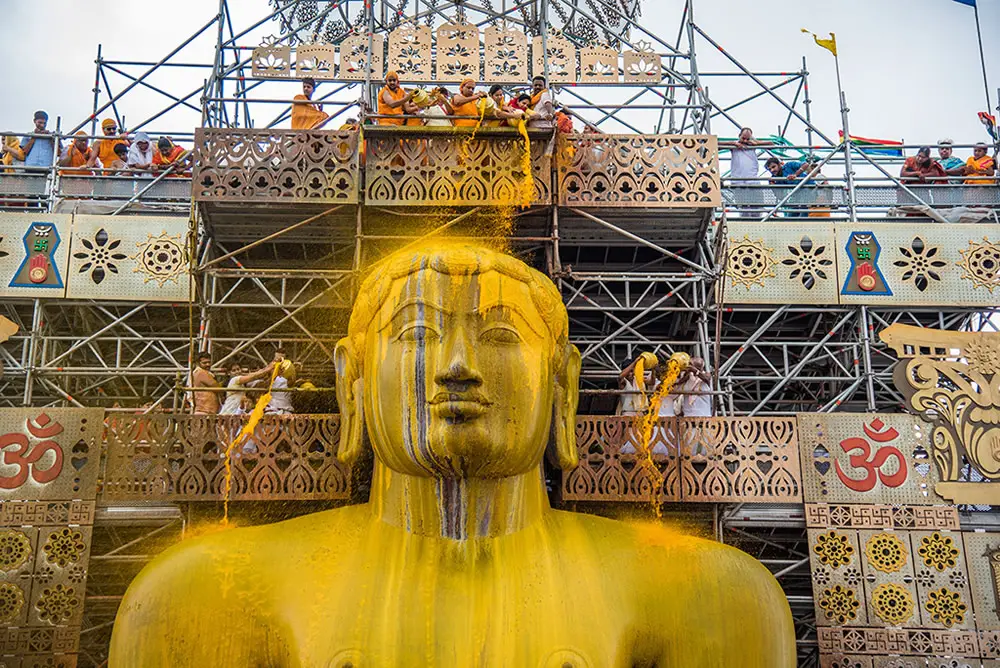
Architectural Splendor
The Gommateshwara Bahubali Temple is a shining example of Dravidian architecture, known for its intricate carvings, elaborate sculptures, and towering gopurams (temple towers). The temple complex comprises several smaller shrines and structures, but the focal point remains the colossal monolithic statue of Lord Bahubali, which is the tallest free-standing monolithic statue in the world.
Austerities
Gommateshwara Bahubali is famous for his rigorous austerities and penance. According to Jain tradition, he stood in meditation for years without moving from the same spot, eventually attaining enlightenment and liberation from the cycle of birth and death (moksha).
Bahubali Statue
The Bahubali statue is the main attraction of the temple complex. Carved in the Digambara style of Jainism, the statue depicts Lord Bahubali standing in deep meditation, completely naked, symbolizing his detachment from worldly possessions. The craftsmanship and attention to detail in the statue are truly remarkable, with every muscle and expression carved to perfection.
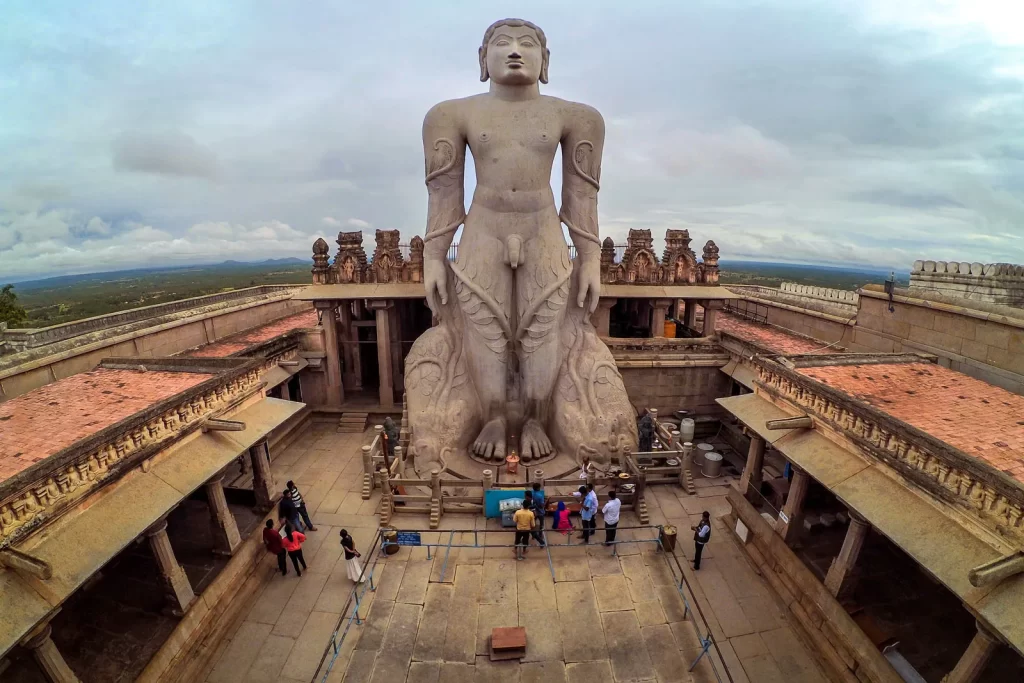
Chandragiri Hill
The temple is situated at the base of the majestic Chandragiri Hill, which itself is a site of great religious significance. It is home to numerous Jain shrines, monasteries, and inscriptions. Pilgrims often undertake a strenuous climb to the top of Chandragiri Hill to visit these ancient sites and seek spiritual enlightenment.
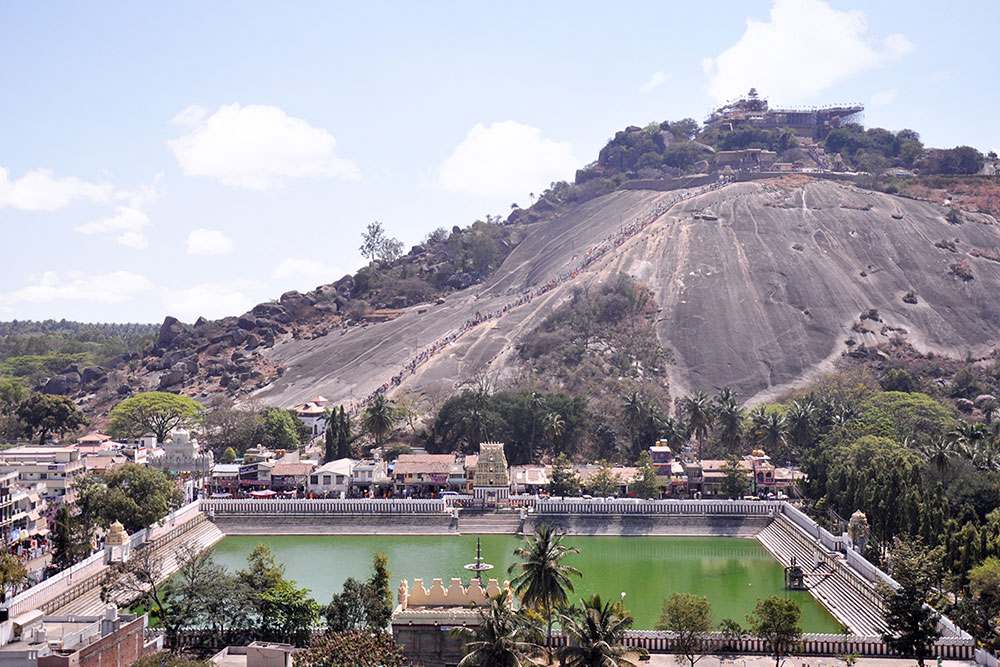
Gopurams
The Gommateshwara Bahubali Temple features beautifully adorned gopurams, or entrance towers, at its main entrance. These gopurams are adorned with intricate sculptures and carvings that narrate stories from Jain mythology. The craftsmanship and artistic expression showcased in these gopurams are a testament to the skills of the artisans of that era.Spiritual Significance
The Gommateshwara Bahubali Temple holds immense spiritual significance for followers of Jainism, as well as those seeking spiritual insight and peace. Here are some aspects of its spiritual importance:
Symbol of Non-Violence: Lord Bahubali’s statue stands as an embodiment of non-violence (ahimsa) and renunciation. His nakedness symbolizes his complete detachment from worldly desires and possessions, inspiring devotees to follow a path of inner purity and self-realization.
Pilgrimage Destination
Shravanabelagola is one of the holiest pilgrimage destinations for Jains, drawing thousands of devotees from all over India and the world. The annual Mahamastakabhisheka festival, held once every twelve years, is a grand celebration during which the statue of Lord Bahubali is anointed with offerings like milk, sandalwood paste, and flowers. This ceremony is a significant event for Jain devotees.
Meditation and Contemplation
The serene and peaceful ambiance of the temple complex, combined with the awe-inspiring presence of the Bahubali statue, makes it an ideal place for meditation and introspection. Visitors can often be seen sitting in quiet contemplation, seeking spiritual solace and enlightenment.
Historical and Cultural Value: Beyond its religious significance, the Gommateshwara Bahubali Temple also holds great historical and cultural value. The temple and its surroundings are living testimonials to the rich heritage of Karnataka and its ancient Jain traditions.
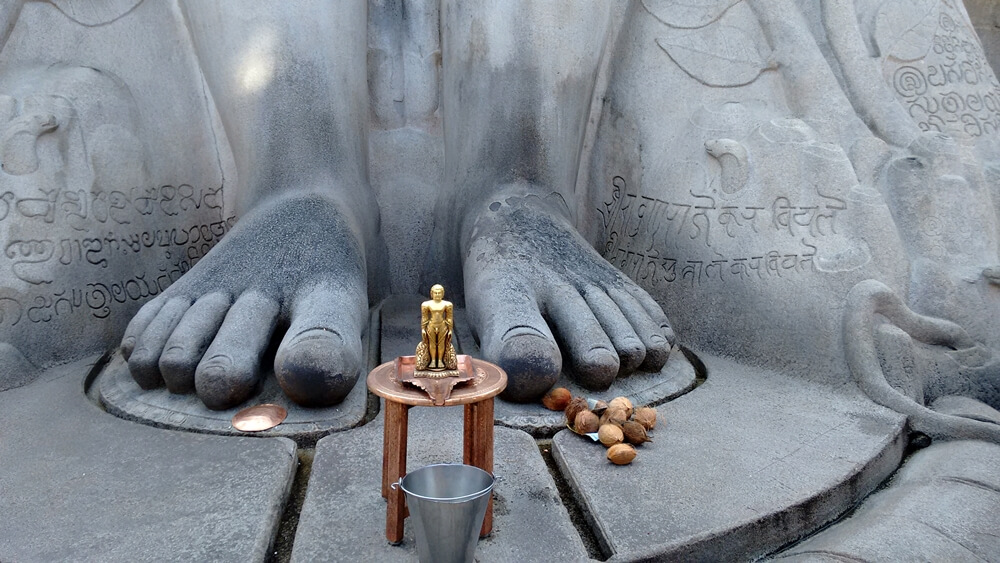
Preservation and Conservation
Efforts have been made to preserve and protect the Gommateshwara Bahubali Temple and its historical significance. The Archaeological Survey of India (ASI) and various Jain organizations have played a vital role in maintaining the temple complex and conducting restoration work when necessary. Preservation initiatives include maintaining the structural integrity of the statue, safeguarding the delicate carvings, and ensuring the safety of pilgrims and tourists.Tourist Attraction
While the Gommateshwara Bahubali Temple is primarily a place of worship and spiritual reflection, it also serves as a major tourist attraction. Visitors of all backgrounds are drawn to the temple to marvel at its architectural grandeur and immerse themselves in its spiritual ambiance.
Photography and Sightseeing: The intricate carvings, imposing gopurams, and the towering Bahubali statue provide ample opportunities for photography and sightseeing. Tourists can spend hours exploring the temple complex and capturing its beauty.
Trekking: Chandragiri Hill, located nearby, offers a thrilling trekking experience for adventure enthusiasts. The trek to the top is rewarded with panoramic views of the temple complex and the surrounding landscape.
Cultural Experience: Visitors can also experience the local culture and traditions of Shravanabelagola by interacting with the friendly locals and sampling regional cuisine.
Conclusion
The Gommateshwara Bahubali Temple in Karnataka is a true gem of India’s cultural and spiritual heritage. With its rich history, awe-inspiring architecture, and profound spiritual significance, it stands as a symbol of Jainism’s enduring values of non-violence, renunciation, and inner purity. Whether you are a devout Jain pilgrim, an architecture enthusiast, or a seeker of spiritual wisdom, a visit to this sacred temple is an unforgettable journey into the heart of India’s spiritual and cultural legacy.
More from our blog
See all postsRecent Posts
- Mangi Tungi, Maharashtra: A Spiritual and Natural Gem of Western India September 14, 2023
- Kashmir:- The Heaven On Earth September 14, 2023
- Gommateshwara Bahubali Temple, Karnataka: A Spiritual Oasis of Serenity and Grandeur September 14, 2023

